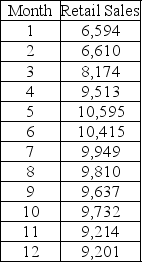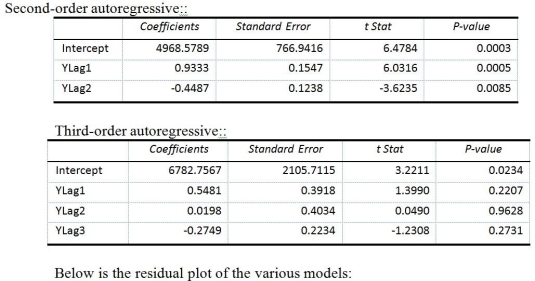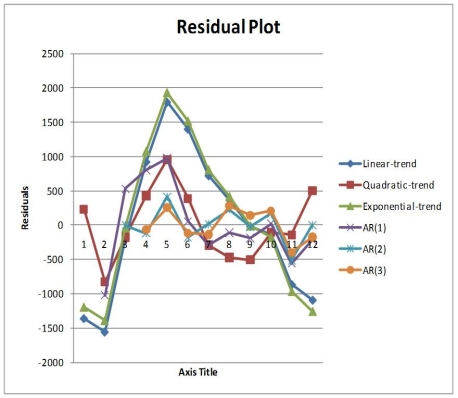TABLE 16-13
Given below is the monthly time-series data for U.S. retail sales of building materials over a specific year.

The results of the linear trend, quadratic trend, exponential trend, first-order autoregressive, second-order autoregressive and third-order autoregressive model are presented below in which the coded month for the first month is 0:




-Referring to Table 16-13, what is the exponentially smoothed value for the first month using a smoothing coefficient of W = 0.25?
Definitions:
Nominal Cost
The cost expressed in current monetary terms without adjustment for inflation, often contrasted with real cost.
Expected Inflation
The anticipated rate at which the general level of prices for goods and services will rise over a period.
Internal Rate
Often referred to as the internal rate of return (IRR), it is the discount rate that makes the net present value (NPV) of all cash flows from a particular project zero.
Net Present Value
A financial metric used to evaluate the profitability of an investment or project, calculated by subtracting the present value of cash outflows from the present value of cash inflows over a period of time.
Q11: Referring to Table 14-19, what is the
Q18: Data on the amount of time spent
Q20: Referring to Table 14-17 Model 1, what
Q45: The superintendent of a school district wanted
Q69: Referring to Table 16-11, based on the
Q146: Referring to Table 14-15, there is sufficient
Q166: Referring to Table 16-13, what is the
Q214: Referring to Table 14-15, what is the
Q242: Referring to Table 14-10, the standard error
Q254: Referring to Table 9-3, if you select